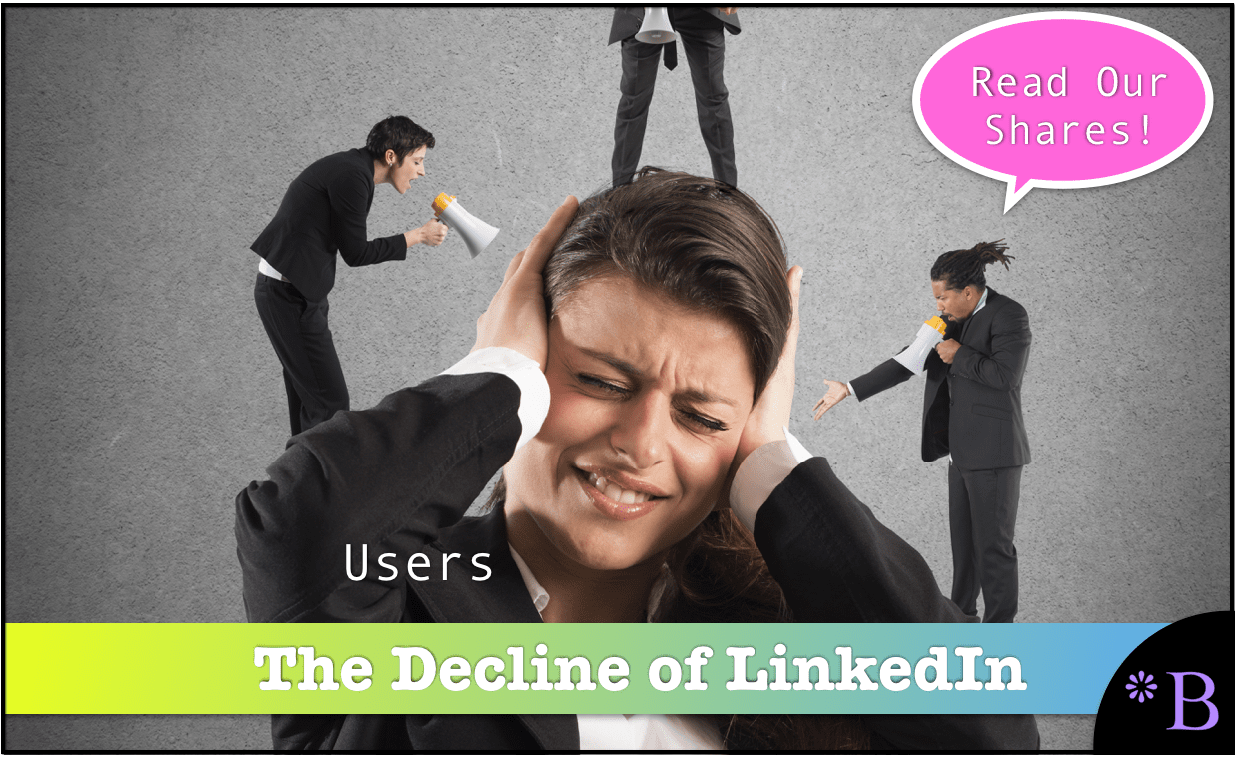The Complications For Smaller Software Vendors in Leveraging Linked In
Executive Summary
-
- Earlier in its history, LinkedIn was a much better tool for gaining visibility than it is today.
- We cover the problems for vendors in leveraging Linked In.

Introduction
This covers the issues with trying to leverage a declining LinkedIn.
Our References for This Article
If you want to see our references for this article and other related Brightwork articles, see this link.
How Linked In Degraded Over Time
Several years ago, LinkedIn provided the ability to publish content and links to content on their platform. This was a good thing, and Brightwork Research & Analysis, along with many others, created active followings and increased the exposure to articles rather than just Google. The content on LinkedIn tended to be read over a short time span as the share quickly moved down in the feed of users, and new shares would push older shared down. However, for that short burst of attention, a share would often provide many views. I had several articles that later performed well in Google because they had received so much traffic through a LinkedIn share. This was an effective way to get exposure. However, within 3 to 4 years of this addition to LinkedIn, several things changed in the value of using LinkedIn to share content.
-
- Microsoft acquired LinkedIn
- The website became notorious for technical problems.
- Over time Microsoft increased prices of all subscription levels of LinkedIn and increased the preference given to advertizers in the feed. As a result, the entire focus of LinkedIn turned to monetize the users.
- Many more people began sharing content on LinkedIn, including a majority that was not creating original content and sharing things like some Six Sigma award they won at their company. Far too many shares were straight corporate fiddle-faddle or about personal promotion or virtue signaling and were not offering interesting information to readers. Much of this content would have never ranked well in Google results and only relied upon the fact that the readers knew the person publishing the share to obtain clicks.
- LinkedIn began to throttle the views on shares that were either not advertizers with LinkedIn or covered non-promotional topics. Brightwork Research & Analysis was the victim of this throttling, which we were able to ascertain not only by the reduced number of views on shares but by the way the views would level out at the same number regardless of the share. This is evidence that LinkedIn set a cap on shares that met the criteria.
What This All Means
As a consequence, LinkedIn has declined precipitously as a business networking platform. I covered the irrelevant nature of my LinkedIn feed in the article. How LinkedIn Has Degraded as a Content Platform.
These changes caused me to stop sharing or seldom look at my LinkedIn feed, and when I do, I simply shake my head.
How LinkedIn Became a Monopoly
LinkedIn beat out other competitors and benefitted from the network effect. They did this by being the best option in the market. However, once they achieved this position, Microsoft scooped them up at an exorbitant price, and they were “Microsoft-ed” into profit maximization and benefit minimization to the LinkedIn user base. And now, it is not feasible to expect a new business network platform to arise as LinkedIn is a monopoly, which is covered in the following article. Could Another Business Platform Rise to Compete with LinkedIn?
What Microsoft Did When They Took Control
Microsoft’s acquisition of LinkedIn degraded the investment into LinkedIn that many people (myself included) would never have made if we had known that it would eventually be owned and managed by Microsoft. Something very similar occurred at eBay. For a time, eBay was a vibrant marketplace of second-hand items, then eBay became corrupt and is now primarily a front end for huge sellers. Now many of us look at the nice scores we took to develop and wonder why we made an effort. This is the pattern with collaborative websites, making a good impression, following a high trust model in the early stages, and then selling out that trust and falling into obscurity. This should moderate the enthusiasm for the “next big thing.” For a long time, the next big thing has been Facebook ads, and it now turns out that Facebook has greatly overstated the effectiveness of Facebook ads, and the marketers that talked about the importance of advertising with Facebook never bothered to validate Facebook’s claims, as I cover in the following article. How Much Are Google and Facebook Overstating the Effectiveness of Their AI and Ads?
With how marketing agencies promoted Facebook ads as the future of advertising, once again, they have to wonder at what they will say without knowing if what they are saying is true.
At this point, I use LinkedIn as just a messaging platform. However, this brings up another topic as Microsoft is probably running algorithms on the LinkedIn message database for espionage, as I cover in the following article. How Microsoft Could Never Have Obtained an ROI on their LinkedIn Acquisition. I can’t believe that with the ethics of Microsoft that they could resist the temptation to run algorithms on the LinkedIn message database to get a leg up on competitors.
Conclusion
The upshot of all of this is that LinkedIn now really only works for the larger vendors and consulting companies that can buy ads. The user base is significantly checked out, and the website has lost a great deal of credibility. Therefore, for small software vendors, this is another lost avenue to get the word out that used to exist but was effectively pulled from the market by Microsoft.